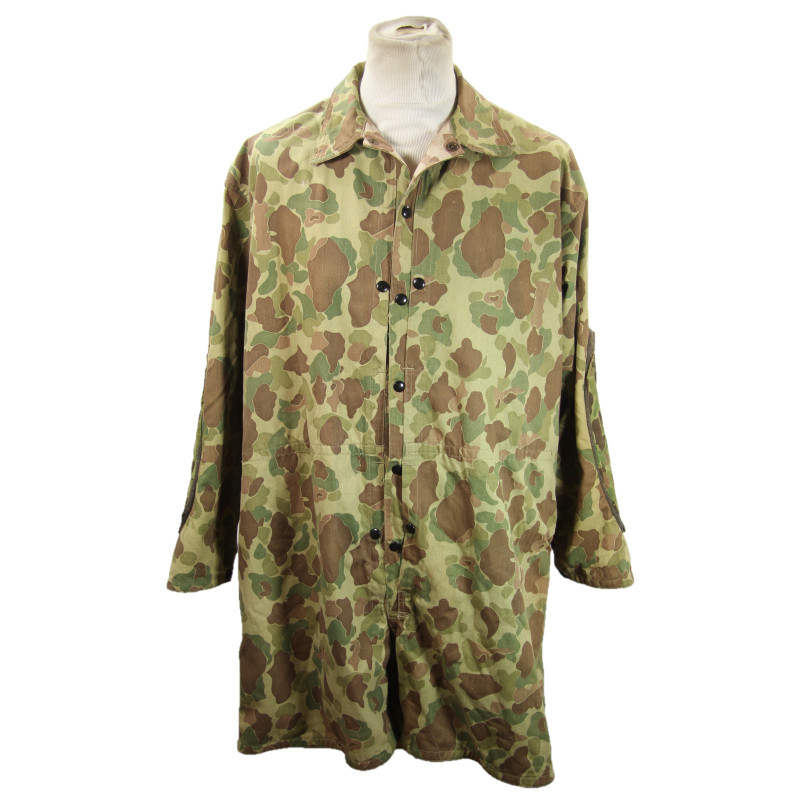















Extremely scarce genuine WWII US Marine Corps step-in pattern 1944 camouflage jump smock intended for the so-called Paramarines. Based on the German Fallschirmschützen-Bluse and the British Denison Smock, this type was especially designed for the USMC paratroopers but was apparently never worn in actual combat. Made up of herringbone twill fabric, this late production version is entirely reversible, following the example of the various camouflage uniforms and equipment developed for the US Marine Corps -- a 'beach' side and a 'jungle' side. The present type features a front closure with six snap fasteners, two side pockets with Talon zippers (in working order), and two elbow felt pads. Size 42.
In 1940, the USMC introduced a new training program for their own parachute units. Three battalions became operational and were finally gathered together in the 1st Marine Parachute Regiment, but none of them was ever used as part of an aerial assaut -- respectively deployed on Guadalcanal in 1942 and on Choiseul Island in 1943, the first and second battalions actually fought as amphibious forces. The evolution of the various special units' doctrine of use, along with the lack of appropriate air support for massive airborne operations, eventually spelled the end of the Paramarines in February 1944.
Some elements were transferred to the 5th Marine Division and fought on Iwo Jima in early 1945, including Private First Class Ira Hayes who participated in the second flag-raising on top of Mount Suribachi. For the record, a handful of Paramarines parachuted into France as part of a mission led by the OSS to support the French Resistance.
In excellent overall condition, the present jump smock is a rare artifact related to these short-lived elite units.
You might also like